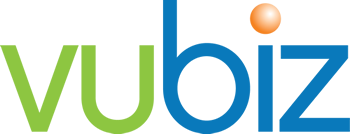 |
Written by Liz McDermott |
Your workplace needs more than just a diverse team. It needs people who understand each other. Companies with strong cultural awareness report 36% better financial performance, and job seekers know it. Three out of four candidates look closely at diversity and inclusion before choosing their next employer.
Here's the truth: Diverse teams struggle with conflicts and miscommunication without proper cultural training. The right cultural awareness program helps your team work better together. Studies show that structured cultural training can boost individual productivity by 12% and strengthen team collaboration by up to 50%.
This article discusses the building blocks of effective corporate culture training, practical implementation methods, and ways to keep your team culturally competent over time.
|
This article is made possible by Vubiz’s clients, who use our Cross-Cultural Training online training course to enhance employees' cultural understanding and communication styles to improve conflict resolution conflict and increase employee engagement. |

Essential Components of Cultural Awareness Training
Want to know a secret? Cultural awareness training works best when you get three things right. Companies that nail these fundamentals see a 12% increase in individual productivity and watch workplace conflicts melt away.
Cross-cultural Communication Skills
Let's start with the backbone: cross-cultural communication skills. Culturally aware teams speak each other's language (and we don't just mean words), build stronger bonds, and get more done. Your people must bridge the cultural gap to read the whole room, from personal space bubbles to gesture meanings to how we adapt our words to navigate cultural differences and cultural norms.
Unconscious Bias Recognition
Here's something we've learned the hard way: Unconscious biases take root early in life and stick around to mess with our work lives. Standard "diversity training" just doesn't cut it. Your team needs cultural intelligence tools to spot and manage cultural biases, plus clear ways to track their cultural competency skills.
Cultural Sensitivity Exercises
Cultural sensitivity leads to cultural humility, which is how your team learns to value different beliefs, values, and ways of life. Skip the boring lectures. The real magic happens when people learn by doing:
- Role-playing scenarios
- Small group discussions
- Cultural exchange activities
These hands-on cultural awareness workshops create cultural safety by allowing people to talk to each other. The result? Multicultural teams stick together better, increasing effective teamwork. If you keep at it consistently, you'll build a workforce ready for today's uncertainty.
Implementing Effective Cultural Education Programs
Innovative cultural education requires careful planning, not just good intentions. McKinsey reports that global organizations that develop cultural training programs well are 33% more likely to achieve industry-leading profitability.
Step-by-step implementation guide
Don't rush into training. First, take a good look at your workplace culture. We've learned it’s better to gather honest, anonymous feedback from your people about cultural concerns. Tools like the Intercultural Development Inventory help you see where you stand.
Here's what your plan needs:
- Know yourself - check your cultural awareness and readiness
- Map out your cultural competence journey
- Pick straightforward ways to measure success
- >Develop training that works for different learning styles
- Keep the feedback flowing
Resource Allocation and Budgeting
Money matters—spend it wisely on different types of training. Virtual sessions let you bring in great teachers without the travel bills. The best programs combine workshops, online learning, and hands-on practice.
Here's something worth knowing: Improving intercultural interactions and removing cultural barriers can save a team of 12 about $37,000 yearly. That's not a cost—it's smart business.
Stakeholder Engagement Strategies
Want your program to work? Get your people involved. Build advisory teams that look like your community. Tell them precisely what you're trying to achieve and how you'll get there.
Bring in voices from different backgrounds—they might know things you miss. Give your working groups clear authority and roles to get things done instead of just talking about them.
Creating an Inclusive Learning Environment
Your workplace needs a space where people can be honest with each other. The numbers back this up - teams feel 7 times more likely to call inclusion part of their culture when they feel psychologically safe.
Facilitating Open Dialog
Let's remove the corporate speak. Open dialog works when people feel safe speaking up. Your job is to create spaces where folks can voice their thoughts without worrying about judgment. Regular feedback and anonymous surveys help you identify areas for improvement.
Building Psychological Safety
Psychological safety allows people to take risks and express their opinions. When leaders promote cultural awareness and sensitivity, something interesting happens: people actually share their ideas. What does this look like in practice?
- People bring their whole selves to work
- Feedback flows naturally, not awkwardly
- Cultural conversations happen without force
- Folks spot their own biases
Encouraging Cultural Exchange
We get it—building spaces for cultural exchange takes work. However, companies tell us something fascinating: problem-solving improves when people freely share their perspectives. Innovative organizations allow people to share their cultural stories and traditions.
Want to know what makes this work? Leaders need to show they're learning, too. Admitting what you don't know builds real connections. This is how you create a place where differences are not just OK but celebrated. This matters even more in hybrid workplaces, where authentic communication bridges the digital divide.
Maintaining Cultural Competence Long-Term
Cultural competence isn't a one-and-done deal. The numbers tell an interesting story: Individual productivity will jump by 12% if you stick with cultural education.
Continuous Learning Approaches
Smart organizations know that one size doesn't fit all. To keep learning fresh, mix it up with workshops, conferences, and seminars. Want real results? Cultural immersion programs let people experience life in others' shoes, building genuine empathy and understanding.
Regular Assessment Methods
You need solid ways to measure progress. Here's what works:
- Employee surveys that reveal how culturally aware your workplace is
- Focus groups with voices from every corner of your team
- Numbers that show who's joining in and how often
- Tools explicitly built for measuring cultural competence
Remember to check the makeup of your community through targeted surveys. These will tell you exactly what your workforce needs—no guessing required.
Feedback Integration Systems
Clear feedback channels can make or break your cultural competence efforts. Build spaces where people feel safe sharing their real experiences. A structured way to gather feedback helps you identify the rough spots in your cultural awareness programs.
Regular check-ins about cultural competence make feedback count. People should also be able to discuss concerns about discrimination or cultural mix-ups openly.
If you keep these pieces working together, you'll create a place where learning never stops. Cultural competence results in better teamwork and more substantial business results.
Conclusion
Let's talk numbers first—cultural education isn't just nice to have. Companies implementing cultural education see 36% better financial performance and 12% higher individual productivity. This isn't another box to check. Innovative organizations know that cultural training builds stronger teams and lasting growth.
Want to make this work? Start with cross-cultural communication, bias recognition, and cultural sensitivity exercises. Add smart implementation and inclusive spaces, and you have something that sticks.
The proof sits in the results. Companies that stick with cultural education watch their teams work better, their customers smile more, and their conflicts fade. Vubiz offers cross-cultural training to keep your workplace sharp.
Here's what we know for sure: cultural competence needs steady attention. Regular checkups, fresh learning approaches, and open feedback help build a workplace where everyone brings their best. Make room for cultural education today. Your team and your business will thank you.
